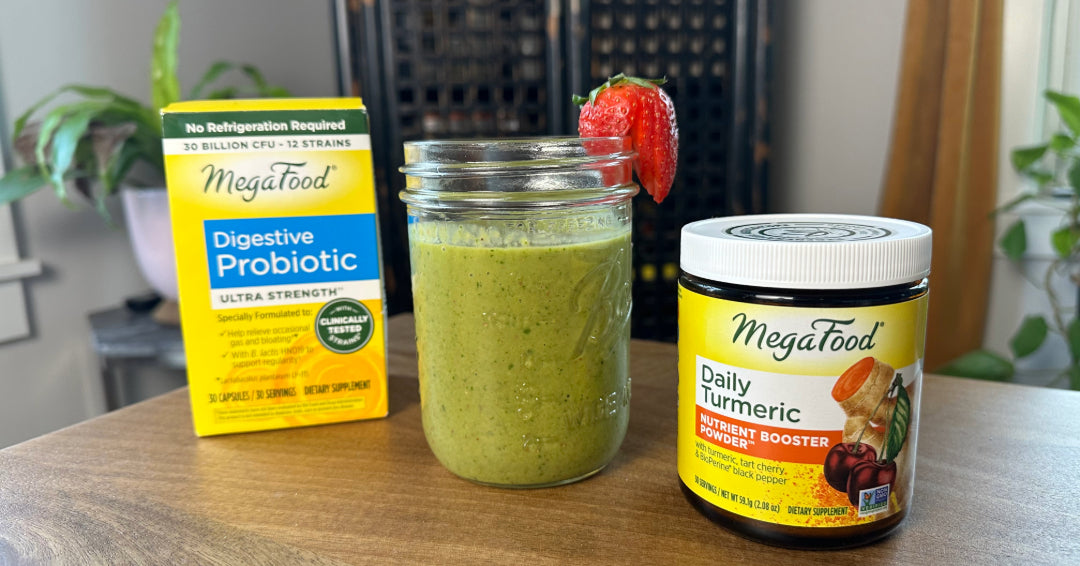For 50 years, MegaFood has been expertly crafting supplements that pair essential vitamins and minerals with real food and botanicals. We believe that food grown from healthy soil is a key solution to making both people and the planet healthier and our goal is to increasingly partner with those who share our commitment to soil health through regenerative agriculture practices. While there is no current standard definition for regenerative agriculture, it includes specific practices like reduced or no-tillage, multispecies cover crops, live roots in the soil for as many days as possible, reduced inputs, and possible incorporation of livestock that are linked to specific outcomes, like improved: soil aggregation; water infiltration rates; bulk density; fungal to bacterial ratio; and soil carbon accrual. Regenerative agriculture is rooted in a new paradigm of building soil health and successful farming by management that focuses on the ability of the biological processes of a living soil and is a climate solution.
These practices build soil, conserve resources, and support thriving livelihoods, all while creating specific outcomes like an increase in soil organic matter, carbon, climate resiliency, and food nutrient density.
When presented with an academic partnership opportunity and to support the Soil Carbon Accrual Project (SCAP), a scientific regenerative study initiated by the Center for Regenerative Agriculture and Resilient Systems of California State University, Chico, being carried out at an alfalfa and wheat farm in Blythe, CA, MegaFood jumped at the chance. You may ask, why alfalfa and wheat? They are not found in MegaFood products. This would be true. However, most US agricultural land is used for growing grasses and grains such as these and, while MegaFood does not use such ingredients in any products, the project presented an opportunity to support the transition of land to regenerative at a scale not currently possible through efforts in our direct supply chain. MegaFood is committed to actively participating in the regenerative movement - it holds a solution for climate change and, at a time like this, sitting on the sidelines is not an option.

The Soil Carbon Accrual Project (SCAP) is a collaboration of scientists and farmers coming together to measure the effect of regenerative agriculture on soil carbon using flux tower technology. Flux towers measure the flow of carbon dioxide (CO₂), water, and other gasses to and from the soil and atmosphere continuously, providing direct, real-time measurements of changes in carbon cycling (“flux”) as it happens. This means that flux towers can give accurate and immediate data to scientifically demonstrate the actual benefits of using regenerative compared to conventional agriculture practices. Because scientific data is a powerful tool with which to leverage change within a system that currently incentivizes unsustainable land management practices, there is an urgent need for this type of information.
Recently, MegaFood had the pleasure of visiting Hayday Farms, in Blythe to see firsthand how regenerative practices have made demonstrable improvements to the land and health of the soil and to see the flux tower that MegaFood is funding in operation. Blythe is a small agricultural town located in the Sonoran Desert of California. It is an unlikely place to find large tracts of land dedicated to farming, with its average annual rainfall of less than 8 inches and temperatures that have been known to spike above 120°F. Farming in the area has been made possible for over 100 years because Blythe’s farmers have had access to a significant share of the Colorado River's water – rights that were secured by the city’s founder, Thomas Blythe in the 1900’s. With a changing climate and increasing water scarcity, supply is no longer limitless and the future of farming in the area is in question.
In an effort to reduce water consumption, local water agencies have developed an incentive program whereby farmers are paid almost $1,000 for each acre of farmland they leave fallow, i.e. dry and unplanted, for stretches of time. While this may be a good short-term solution to address the water crisis, it brings many other problems that may have far-reaching consequences if not attended to.

There are many challenges associated with the act of leaving fields completely bare and exposed to the elements, particularly the burning desert sun. In these conditions, the soil can reach very high temperatures and, over time, the organic matter, fundamental to growing healthy food, essentially gets baked out of it. This, coupled with the chemicals needed to prevent plants from sprouting, leads to infertile conditions and soil that more closely resembles solid, grey, concrete-like chunks, rather than dark, humus-rich loam which gently crumbles between ones fingers exposing soft clumps and webby root filaments, which holds together in the presence of water, and exudes the unmistakable sweet smell of fresh, fertile earth.
The damaging effects of fallowing land in the desert were visible to the naked eye, with vast areas of parched and cracked dirt. Dale Tyson, a forward-thinking farmer who has cultivated the land for four decades, invited us to hold a clump of the dead earth, heavey and compacted, in our hands. In contrast, he presented a clod of soil taken from the adjacent field in which he had been employing regenerative practices such as multi-species cover-cropping and no-till for two years. The difference was significant and evidenced by the fact that Dale had found earthworms in his regenerating soil for the first time in his forty years of farming there! The benefits could be further demonstrated by placing the two samples into a container and flooding them with water. The dried earth from the fallow field rapidly dispersed in the water and had no capacity to absorb the liquid, whereas the regenerated soil was able to absorb and have water pass through without losing its form.
Understanding the nature of changes in the soil can be taken to the next level with flux tower technology, and the tower funded by MegaFood has already provided invaluable data. Results coming from the flux to date show important benefits of the regenerative practices when compared to conventional practices. These include:
- Significant reduction in soil temperatures (down to 12 inches below the surface)
- Increased total microbial and fungal biomass (needed for healthy, living soil)
- Enhanced numbers of arbuscular mycorrhizal fungi – a big name for little, symbiotic fungi that connect the plant roots with the soil in which they are growing, aiding in nutrient availability and protection from pathogens
- Greater stability in the movement and storage of water and air through the soil
- Enhanced carbon accrual
- Increased soil aggregation, thereby resisting soil erosion and increasing water infiltration rates, thus reducing the rate of flood events.
According to Cynthia Daley, Professor & Director of the Regenerative Agriculture Initiative, “I see this dataset as proof that these regenerative practices work as a natural-based climate solution. We see improvements in soil structure (less erosion), better water infiltration, and enhanced soil carbon accrual, which means we are drawing down carbon. As the soil remodels, it becomes more biologically diverse. At that point, we have the option to reduce inputs, because biology is making nutrients available to the crop. It's a true working collaboration between the plants and the soil biology.”
MegaFood is excited to be partnering with farmers and scientists leading the way in the revival of regenerative agriculture practices, knowing that it holds a promise of benefit for both people and planet. We look forward to keeping you updated as the study continues.


Leave a comment
This site is protected by hCaptcha and the hCaptcha Privacy Policy and Terms of Service apply.